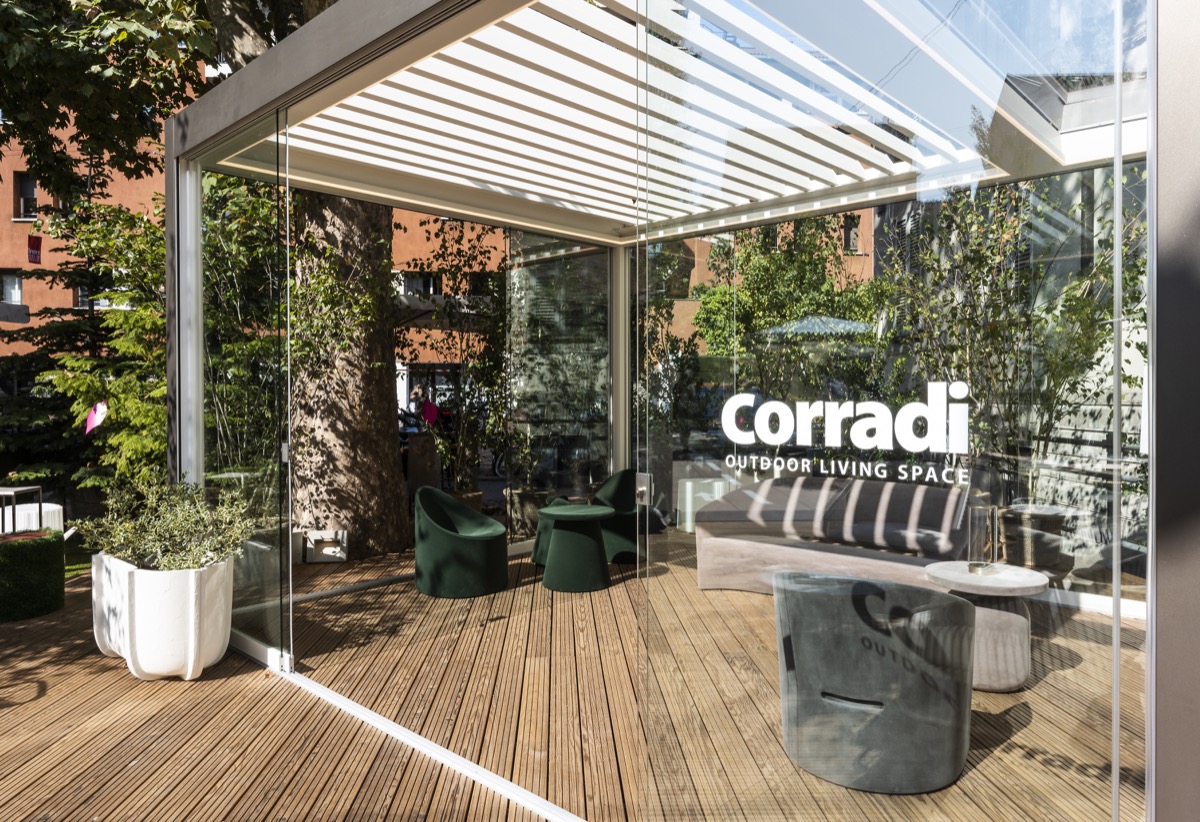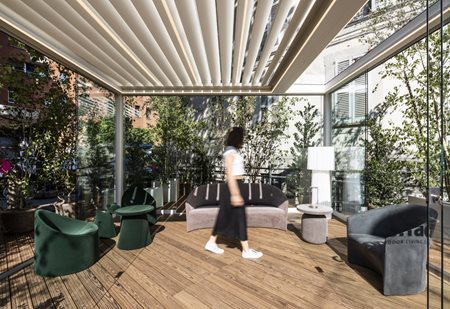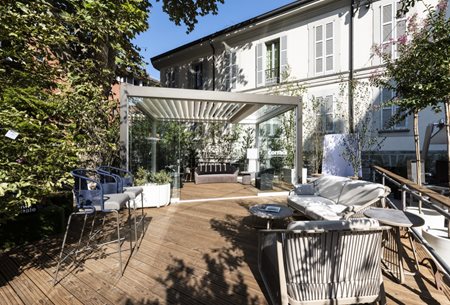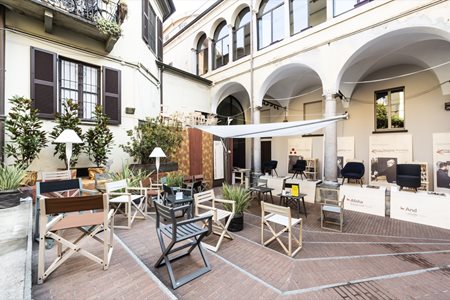Insights
Popping design talks. Marco Piva and the green wave in new outdoor living spaces

« Green Wave : The New Living Spaces», this is the name of the project at the centre of the discussion, in which we have taken a great interest and proudly taken part in recent years. The pandemic brought this topic back to the forefront in the world of outdoor living, revealing “a clear and evident need to be able to enjoy outdoor spaces as functional living areas capable of combining the idea of a protected environment with that of nature.”

According to Piva, in a widely-varied landscape like that of Italy, the pleasure of being able to enjoy the outdoors was already widespread before, but after being locked down for months during the pandemic, people seemed to realise that they needed to find some sort of continuity between their homes and the world outside.
For Corradi, this has always been a topic of great interest, both from a product standpoint and in terms of the possibility of using certain spaces as catalysts for city transformation processes.
Green design is one of the studio’s fundamental concepts, and serves as a tool for guiding what the architect refers to as the “green wave”, which has come to play an increasingly major role in street furnishing projects.
A gentle wave will change the way we live
« Green Wave : The New Living Spaces » was a crossroads of mutual stimuli that helped us understand how outdoor spaces can be functional to living, because they create private and articulated places that are defined based on each of our own choices.Another focal point of the careful and thorough analysis of this new way of designing common areas was the attention paid to the process of creation and construction, which, for the Architect, must be coordinated among all those involved. The term Green, therefore, not only refers to the presence of natural elements within the projects, but also to the sustainable approach utilised, in which the resources are allocated and distributed so as to be potentially absorbed within the process.

“Today, there’s a greater propensity for dialogue to strengthen the work team, especially abroad.
In the past, Italian products were always widely acclaimed, but large projects were difficult to tackle with limited resources. In order to be carried out, the project aims to expand into several sectors that are able to collaborate in synergy.”
The figure of the architect therefore becomes a fundamental coordinator, with ties to various sectors and locations, not only different areas of the home, but also of hotels, common areas, and schools, which, during the design and construction phases require joint action, and need to be conducted like an orchestra, by a maestro who acts as the glue between the various companies working on the project in synergy.
The end result is more than just the sum of its parts
A project can be deemed successful if the end result is more than just the sum of its individual parts, and if it takes into account the specific skills of all those who have collaborated on it, the construction and design elements that contribute to the final result, and the context, which necessarily has an impact on the overall performance.“Even the setting for the Popping Design meetings, Piazza San Marco, was redeveloped and transformed from a parking lot into a place of cultural activity: an urban garden where visitors can imagine loggias, terraces, and private gardens, where they can bring equipment and greenery, and enjoy the pleasure of being outdoors, either on their own or in the company of others.”

The outdoors: an identity concept
Marco Piva goes on to explain how, on the international scenario, the outdoors is an identity concept with ties to specific countries, and is viewed differently in different parts of the world.“In Italy, we’re credited with being able to successfully envision innovative scenarios, because we’re able to combine the architecture with the product, the materials, the lifestyle, and the sociability that revolve around a specific place. At one time,” he continues, “the outdoors was seen as an extra room. Today it’s a place that can be increasingly designed, where you can even install a hot tub or an outdoor kitchen.”
It’s the vision that makes all the difference. The basic idea is to add your own extra touches, with natural elements that give the space an added value.
In addition to domestic environments, the Green Wave is surprisingly also impacting restaurants, boutique hotels, and the home design sector: in defining the outdoor spaces, in which we’ve included every possible functionality, we’ve created living areas that are adaptive and high-performance, even when we’re not physically present.
The outdoors can therefore be “a space where you can receive Amazon deliveries, a common workplace, a meeting place for parties, or a place for hobbies: knowing that your home is capable of adapting to your needs is important. “
Function therefore plays a major role in the design of Marco Piva’s New living spaces: places that are efficient at reducing time and consumption, and rendering luxury more sustainable, especially with regard to functions conceived and designed to solve a problem.
